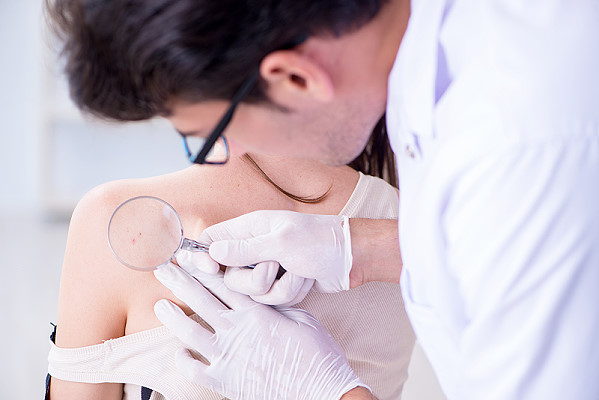 This July is National UV Safety Month, so with that in mind it’s a good time to educate ourselves on how to properly identify signs of skin cancer on the body. There are many free health resources online where you can gather information on this topic. Of course it’s always best to see a doctor if you’re concerned about a lesion, but knowing how to perform a proper self-check can help you make that initial decision to see a doctor for further investigation. One of the most important factors impacting your ability to catch skin cancer early is whether one can identify the signs and symptoms. These three pieces of advice can help:
This July is National UV Safety Month, so with that in mind it’s a good time to educate ourselves on how to properly identify signs of skin cancer on the body. There are many free health resources online where you can gather information on this topic. Of course it’s always best to see a doctor if you’re concerned about a lesion, but knowing how to perform a proper self-check can help you make that initial decision to see a doctor for further investigation. One of the most important factors impacting your ability to catch skin cancer early is whether one can identify the signs and symptoms. These three pieces of advice can help:
Survey Your Skin Every Day
Before going into the shower or bath, look over all of your skin in the mirror. It only takes about two minutes, but many people don’t bother to do so. By checking for abnormal growths, you’re helping yourself catch cancer early. And since all cancers are significantly more treatable when diagnosed early-stage, this could end up saving your life. Often skin cancers in odd areas (armpit, groin, etc) aren’t caught until too late, because people aren’t used to checking their skin in these areas. You should also make sure to schedule an annual dermatologist check-up, to make sure there isn’t anything you miss. This is covered by insurance, and only takes 5-10 minutes.
Follow the ABCDE Rule
The “ABCDE rule” is an acronym describing five common traits of a cancerous lesion:
A) Asymmetry
B) Border
C) Color
D) Diameter
E) Evolving
A benign skin lesion is unlikely to have these traits, so if you’re tracking a mole on your body and any of these surface, it’s important to see a dermatologist. The ABCDE traits are more commonly found in melanomas than in less harmful types of skin cancer like basal cell carcinoma.
Get a Second Opinion When Diagnosed
If you do get diagnosed with any form of skin cancer by a licensed medical professional, it’s a good idea to get a second opinion from another doctor in the same field. Skin cancer is especially likely to be misdiagnosed, given that different lesions often resemble one another. Even biopsies can yield a flawed result if the wrong part of the lesion is removed.
Since misdiagnosis are often incredibly costly and inconvenient , it’s worth the extra co-pay to have someone else check your skin out. There’s an upwards of 40% chance that the initial diagnosis was wrong for skin cancer.
Clearly the foundation for good skin health is regular self-checkups. But after that point you’ll have to trust professionals to do their job and give you an accurate diagnosis. Do your best to avoid skin cancer entirely by liberally using sunscreen and protective clothing, but if you do end up going to the doctor make sure to be ready to see another one to confirm the findings.
Post contributed by Cal Cook at ConsumerSafety.org
